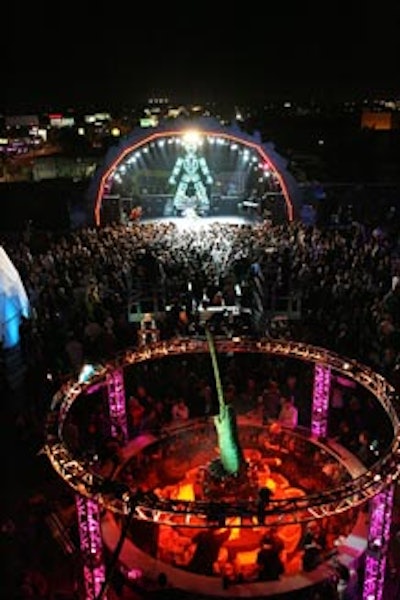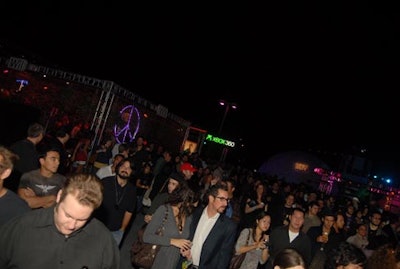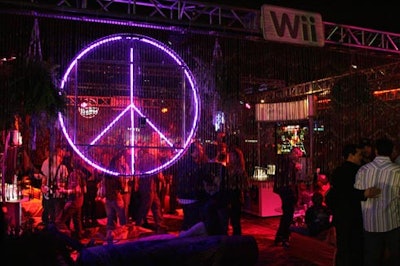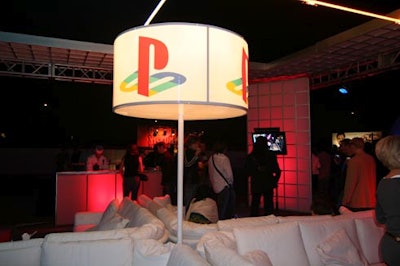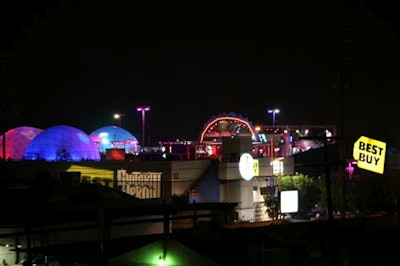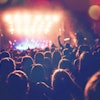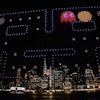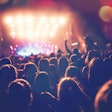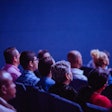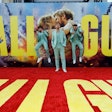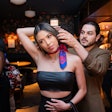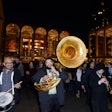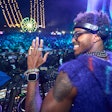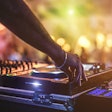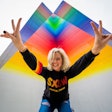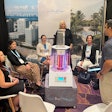For fervent fans of Guitar Hero III: Legends of Rock, only one experience could beat playing the latest version of Activision's monster-hit music video game: living it. And for several hours before Best Buy put the game on sale at midnight on October 28, the mega video-game retailer virtually made their dreams come true with a huge launch party on the roof of its West Los Angeles store.
“The concept was for people to feel like they actually walked into the game,” said event producer Donna Graves, co-founder of NCompass International Inc., who worked closely with Yvonne Groves, Best Buy's event marketing senior manager. “Everything we did was to be as authentic as possible.”
NCompass brought in frequent collaborator Keith Greco of Greco Decor to create a nighttime landscape filled with scenes and life-size characters from the game, as well as their real-world inspirations. As 1,500 music, film, and video-game folk, media members, and cool kids ascended stairs to the roof, they found a large stage outlined in neon and emblazoned with a Burning Man-like neon figure, resembling the main stage of the game's Desert Rock Tour scene. There, Joel Madden of Good Charlotte played two 45-minute sets that flanked a nearly hourlong performance by Poison. (Poison is a band in the game, and lead singer Bret Michaels is a character.)
More than 40 game kiosks in three formats were scattered among three lounges, each identified with a different character. Wii consoles decked the '60s-flavored lair of the Jimi Hendrix-like Xavier, which was furnished with bean-bag chairs, lava lamps, hanging ferns, and beaded curtains. Waitstaff circulated with items called “flaming guitars” (guitar-shaped shrimp toast) and “foxy ladies,” described as “tandoori chicken with sweet tomato chutney.”
PlayStations dotted the minimal environment identified with the new J Pop princess character Midori, where hungry players could fill up on sushi. The Xbox 360 consoles were located in an '80s-style lounge with red-and-black velvet curtains, inspired by such bicoastal rock temples as New York's CBGB and L.A.'s Roxy. Lining the walls were large black-and-white portraits of the era's rock gods, including Slash, who's also a character in the game. Slash the human hovered near his portrait as guests nibbled themed snacks like New York-style pizza, warm pretzels, and burger sliders with American cheese. Later, Slash stuck around to sell the first copy of the game.
The home-video divisions of Warner Brothers, the Walt Disney Company, Sony, and Paramount promoted their own wares in geodesic-dome-like structures, but most guests seemed drawn to the games, the music performances, and the consumables offered by the nearly hundred-strong army of waiters and bartenders.

